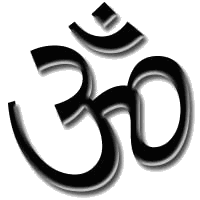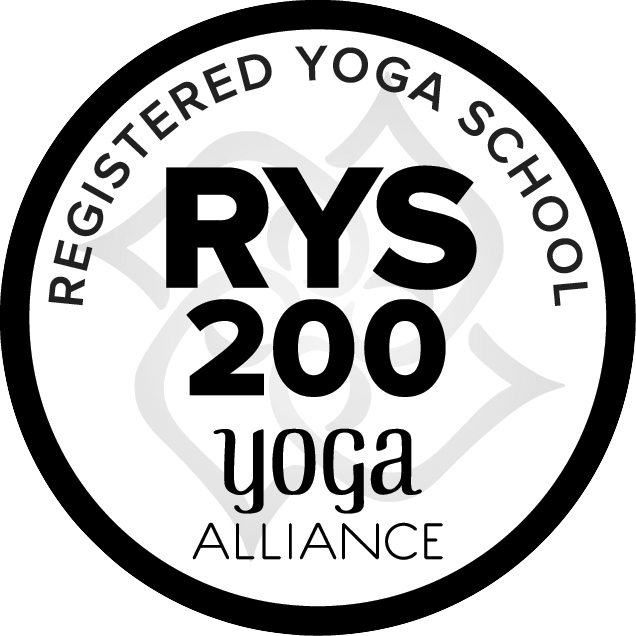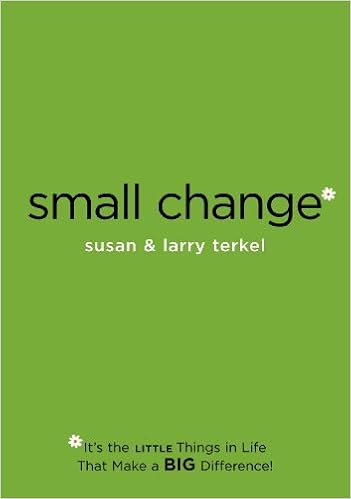We practice and teach the classical eight‑limbed Astanga Yoga
(a.k.a. Raja Yoga)
as codified by Patañjali
in the Yoga Sutras.
|
- Yama
- Niyama
- Asana
- Pranayama
- Pratyahara
- Dharana
- Dhyana
- Samadhi
|

Our Mission: To train qualified
Yoga instructors that teach asanas and other Yogic practices safely
and inspire their students to seek
and discover their inner self.
Quick Links:

How to Meditate
Secrets to the Easiest and Most
Effective Meditation Technique

Larry's new book is available at
www.SecretsToMeditation.com


Click here to learn
about Larry's book:
small change*
*It's the LITTLE Things
in Life that Make
a BIG Difference!

Important Links for Yoga Teacher Trainees:
|
 What is Yoga
What is Yoga
Yoga is a sanskrit word that comes from the same root as the latin "yoke"
- to join together. Perhaps the best translation of it would be "union".
Union of what? Well that depends on your perspective, whether practical,
scientific, religious, or spiritual. Here are some the common "unions"
that people seek:
-
Union of body, mind, and spirit
-
Union of conscious and unconscious mind (or bringing the unconsious
into awareness)
-
Union of "lower self" and "higher self"
-
Union of the individual soul and the Divine
-
Union of one's male side and female side
-
Union of Yin and Yang
-
Union of your "everyday nature" with your "true nature"
So Yoga is "union". A sage named Patanjali codified Yoga
many thousands of years ago. (He did not originate Yoga, just wrote down
the practices). In his work called the "Yoga Sutras" he says,
"Yoga is the control of the vrittis of the mind".
The vrittis are waves or modifications such as thoughts, memories,
and emotions. It is not that these waves are bad or evil, but just as the
waves of a lake scatter the light and keep you from seeing your reflection,
the vrittis keep you from seeing your true self. He goes on to say,
"When the vrittis are controlled, the seer abides
in his own true nature".
Here is another way to look at it: Everything has a "true nature", that
essence that comes forth when you just leave things alone in their natural
environment. For example:
-
Water is cool
-
A mountain is still
-
A lump of coal is black
-
A diamond is hard
-
Fire is consuming
So, what is the true nature of a human being - your true nature? Someone
searching for this, someone trying to be one with their own true nature,
is a yogi (male) or yogini (female).
And by the way, the yogis, and sages of all tradition, say that your
true nature is peace, bliss, and happiness. That you are truly divine.
To learn more about the Yoga Sutras of Patanjali, follow one of these links:
- Yoga Sutras
Index of Articles by SwamiJ at www.swamj.com
- "Patanjali's Vision of Oneness", Translation by Swami Venkatesanda
- "The Yoga Aphorisms of Patanjali", interpreted by William Q. Judge
(Theosophical University Press Edition)
Now, just because someone is a yogi, or studying Yoga, you really
don't know that much about him/her. There are many kinds of Yoga, or paths
leading to union. If someone says they are a scientist, you don't really
know whether they spend all day in the chemistry lab or all night looking
at stars. All you know is that they are following a systematic path towards
knowledge. Yoga is like that. Some yogis meditate, some pray, some contemplate.
Some dance all day long singing Hare Krishna. Different systems of Yoga
are suitable for different personality types, so pick the path that calls
to you. Honor all the paths, but follow one.
Back to top
 What is Astanga Yoga (a.k.a. Raja Yoga)?
What is Astanga Yoga (a.k.a. Raja Yoga)?
Astanga Yoga is the most systematic branch of yoga. Astanga Yoga
means 8-limbed yoga or 8-runged yoga because there are eight main parts
to it. It has been around for thousands of years, but was first written
down by a sage named Patnjalli about 2000 years ago. Astanga Yoga is often
called "Raja Yoga", which means the "Royal" Yoga. This name was actually
coined at the turn of the century by Swami Vivekannanda, who thought Westerners
would have a hard time saying "Astanga"!
Note: There are yoga schools in the U.S.A. that call their teachings "Astanga Yoga". While these schools have some wonderful teachings, the name can be a bit misleading, as what some of them often teach an intense style of asanas. This should not be confused with the "classical" teachings of Patantaji in the Yoga Sutras.
The eight steps of Astanga Yoga are:
-
Yama, or Controls or Restraints
-
Ahmisa - Non-violence, non-injury, living to love and serve
-
Satya - Truthfullenss, eliminating falsehood from our lives
-
Asteya - Non-stealing, not taking that which is not ours
-
Bramacharya - Moderation, Non-indulgence, not disturbing the harmony and equilibrium of our lives. Literally means "walking with God".
-
Aparigraha - Non-possesiveness, yielding, letting go of unnecessary
objects which obstruct our progress
-
Niyama, or Observances or Actions
-
Shaucha - Purifying body, mind, and spirit
-
Samtosha - Contentment, cultivating the inner joys shich come
with freedom from desire
-
Tapas - Self-discipline, developing a strong will, training the
habits of body and mind
-
Svadhyaya - Self-study, including of study of scriptures and worldy knowledge that leads to better understanding of self and Self.
-
Ishwara Prandihana - Self-surrender to our higher consciousness,
our true inner self, and/or to god (notice that yoga acknowledges that
there is a god, but does not name any particular god or prescribe particular
religious practices).
-
Asana, or Posture - exercises and practices to make the body comfortable, steady, flexible, strong, and balanced.
-
Pranayama, Control of the Life Energy, often called the "Science of Breath" (but it is much more than that).
-
Pratyahara, Control of the Senses - withdrawal of the senses, "traveling through the body"
-
Dharana, or Concentration, learning to focus the find into one point
-
Dhyana, or Meditation, sustaining the mind on one-point
-
Samhadi, or Self-Realization, transcending the mind, going beyond
the normal limits of self or ego, becoming one with substance and flow
of creation.
Back to top
 What
is Hatha Yoga What
is Hatha Yoga
Most people refer to the "twisty exercises" or postures as "yoga" or
"hatha yoga". Actually the postures are just the third step (asana) of
Hatha Yoga, which includes the first four steps listed above, Yama, Niyama,
Asana, and Pranayama.
Even so, most yoga classes at community centers and even many yoga
centers are on the postures.
"Ha-tha" is actually a compound of two sanskrit words, "ha" meaning
sun, and "tha" meaning moon. So hatha yoga is really the "union of the
sun and moon". This refers to bringing together our light and dark sides,
our masculine (strength) and feminine (gentle) sides, our constant nature
and our changing nature. In addition to sun-moon, Hatha also means force
and flexibility.
Have you ever been by a lake, or on a mountain, or just about anywhere
at sunrise or sunset? Did you notice how calm and still the world becomes?
This feeling that comes at the joining of day and night, the union of sun
and moon, is the goal of Hatha Yoga. Hatha Yoga is seen as a preparation
for the higher steps of Astanga Yoga. It makes the body become comfortable
and steady so that it is not an obstacle in achieving the subtler states
that meditation makes accessable.
Back to top
 What
is Pranayama and the "Science of Breath"? What
is Pranayama and the "Science of Breath"?
"Prana" (with a capital "P") is the life energy, and Pranayama is the "control of the life energy. Because "prana" (with a little "P") means breath, many people refer to the Pranayama as "The Science of Breath". Technically, this is incorrect, because there are four other "life energies" in addition to breath. On a practical basis, though, you may think of Pranayama as the "Science of Breath" because for beginners, most of the practices would be breathing exercises. Many of the more advanced exercises (both breathing and otherwise) often seem very strange to those who are not familiar with them. Some of the effects of these advanced practices can be very gentle and subtle, like just feeling balanced, but many can produce powerful reactions and are best done under the guidance of a good teacher.
Back to top
 What
is Meditation? What
is Meditation?
Dhyana, or Meditation the 7th limb of Astanga yoga. It is a state of awareness attained when one is able to sustain the mind on a single point.
In this state. our awareness is different from our everyday awareness just
as a laser beam is different from a flashlight. A flashlight can illuminate a large area, but a laser, even a very low power laser, can cut through solid objects. The best description of a meditative mind is a "one-pointed mind".
Many people confuse meditation with contemplation or prayer. While these are all useful and helpful practices, they are very different from meditation. If prayer is "asking" then mediation is "listening". If contemplation is "thinking/considering" then meditation is "watching".
Back to top
 What
is Samadhi? What
is Samadhi?
Samhadi, or Self-Realization, is the last step of Astanga Yoga.
It is a transcendence of the mind, going beyond the normal limits of what
we normally call our self or ego. It is becoming one with the substance
and flow of creation. It is like the feeling when we become totally lost
in something outside of ourselves, perhaps when watching a beautiful sunset
or waterfall, being absorbed in a game or story, or watching your children
experience joy.
Interestingly enough, it is not the goal! It is just one of the tools
that a yogi uses in discovering the inner light!
Back to top


|











 What
is Meditation?
What
is Meditation?
 What
is Samadhi?
What
is Samadhi?

